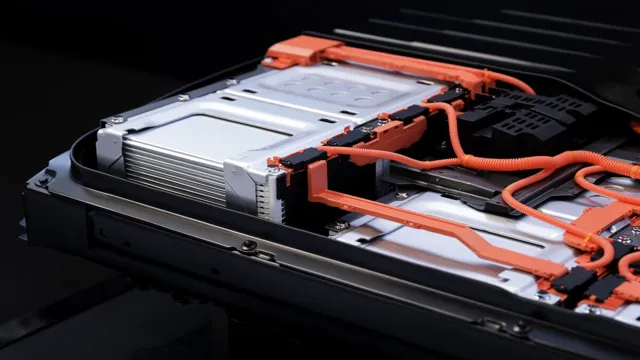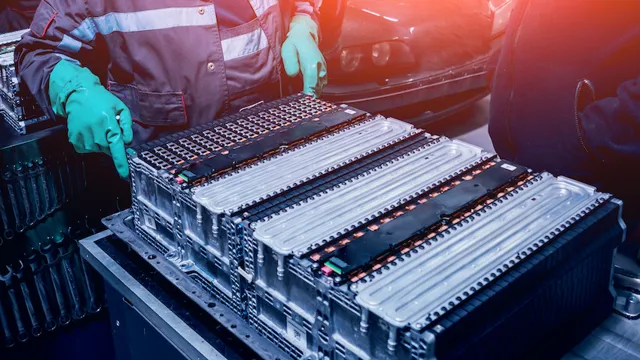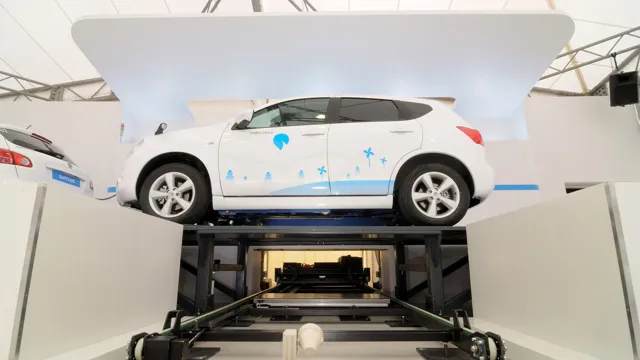The Future of Electric Cars: Discovering the Optimal Placement for Batteries
Electric cars are becoming increasingly popular for a multitude of reasons, including their positive environmental impact and their potential for cost savings in the long run. One of the most important aspects of electric cars is their battery placement, an essential component that is responsible for powering the vehicle. Optimal battery placement for electric cars is crucial, and it involves a complex set of considerations that can greatly affect the vehicle’s performance and efficiency.
In this blog, we will explore the intricacies of battery placement for electric cars, including the factors that influence it and the benefits of optimal placement. We’ll also take a closer look at the different types of electric car batteries and how they work, empowering you with a better understanding of this vital aspect of a greener future.
Factors to Consider
Finding the best placement of an electric car battery is crucial to ensuring optimal performance and safety. Several factors should be considered when determining the placement of the battery in an electric car. Firstly, the weight distribution of the car is essential, and the battery should be positioned in a manner that ensures good balance and stability.
Secondly, the size and shape of the battery need to be taken into account to ensure that it fits appropriately, without taking up too much space. Thirdly, the temperature of the battery must be maintained within a safe operational range. Hence, finding a location that allows for efficient cooling is important.
Fourthly, the placement of the battery needs to be safe and secure, minimizing the risk of damage when driving on bumpy or uneven roads. Finally, the designer must also consider the accessibility of the battery for maintenance and repair purposes. In conclusion, careful consideration of these factors is essential when determining the optimal placement of an electric car battery, and the best location will vary based on the design and make of the car.
Weight Distribution
Weight distribution is a crucial aspect to consider when it comes to transportation, especially for heavy goods. Factors to consider in weight distribution include the type of vehicle, the load capacity, and the road conditions. If the weight is not distributed evenly, the vehicle can become unstable and result in accidents.
It’s also important to keep in mind that the weight distribution needs to be adjusted depending on the load being carried. For example, a truck carrying cargo will have a different weight distribution than a truck carrying passengers. To ensure proper weight distribution, it’s best to consult the manufacturer’s recommendations and utilize scales to accurately measure the weight being carried.
By considering these factors, you can help ensure safe and secure transportation of goods and passengers.
Cooling Requirements
When it comes to cooling requirements, there are several factors that need to be considered to ensure efficient and effective cooling. Firstly, the size of the space being cooled is an important consideration. A larger space will require a more powerful cooling system, while a smaller space may be adequately cooled with a smaller unit.
Another important factor is the temperature of the environment where the cooling system will be used. In hotter climates, a more robust cooling system is necessary, while in cooler climates, a less powerful system may suffice. Additionally, the specific application for which the cooling system is being used will also affect the cooling requirements.
For example, a server room will require a different type of cooling solution than a residential home. Overall, it is important to consider all of these factors when selecting a cooling system to ensure optimal performance and energy efficiency. By choosing the right system for your needs, you can ensure that your space remains cool and comfortable while minimizing energy costs and environmental impact.
Crash Safety Regulations
Crash Safety Regulations Ensuring the safety of drivers and passengers on the road is crucial, and the implementation of crash safety regulations plays a massive role in achieving this goal. When it comes to the factors to consider in these regulations, there are several key aspects to keep in mind. One of the most critical factors is the ability of the vehicle to absorb the shock of a collision and protect those inside it.
Additionally, the ability of the vehicle to maintain structural integrity during an accident is equally important. Other factors include airbag systems, seatbelt usage, and crash avoidance technologies such as automatic braking systems and lane departure warnings. By taking these factors into consideration, crash safety regulations can effectively reduce the number of injuries and fatalities on the road.
Current Industry Trends
In the world of electric vehicles, one of the hottest topics is the placement of the battery. As automakers work to improve their EV offerings, they are experimenting with all sorts of battery positions, with the goal of finding the perfect location for optimal performance. Many experts believe that the best placement for an electric car battery is low and centered, to keep the car stable and improve handling.
This is why some EVs have their batteries located beneath the floor of the car. However, this is not the only option. Some automakers are exploring other locations for their electric car batteries, such as under the rear seats or even in the trunk.
The placement of the battery can have a significant impact on the car’s weight distribution, handling, and overall performance, so automakers are carefully considering all options before making a decision. While the debate over the best placement of the electric car battery rages on, one thing is clear: the future of electric vehicles is bright, and we can expect to see many more innovative battery placement options in the years to come.
Front Placement
Front placement is the current industry trend in eCommerce and retail, and it’s gaining popularity fast. With the rise in online shopping and the need for convenience, customers are expecting faster delivery times and easier access to their purchases. Front placement, also known as forward placement or local fulfillment, involves storing products close to where customers are located.
This means fulfillment centers or warehouses are placed strategically in locations that allow for faster delivery times and reduced shipping costs. With front placement, retailers are able to compete with the likes of Amazon and Walmart by offering faster delivery times, improved customer satisfaction, and increased operational efficiency. In addition, it allows retailers to better manage inventory and reduce the risk of stockouts.
As a result, customers are more likely to purchase from retailers that offer front placement as it provides them with a sense of reliability and trust. With this trend in the industry, retailers are expected to continue to prioritize front placement as part of their overall strategy.
Rear Placement
Rear placement is becoming an increasingly popular trend in the current industry. More and more manufacturers are now opting to place the engine at the back of the vehicle rather than the traditional front placement. This design allows for better weight distribution, resulting in improved handling and control on the road.
Plus, with no engine in the front, there is more space for storage and additional safety features. However, some argue that rear placement can lead to instability and traction issues, especially in wet or icy conditions. Despite the debate, it’s clear that rear placement is gaining traction in the industry, and we can expect to see even more vehicles designed with this layout in the near future.
Undercarriage Placement
When it comes to the placement of the undercarriage, there have been some notable industry trends in recent years. One of the most prominent developments has been the shift towards more forward-mounted undercarriages, which provide greater stability and maneuverability. This has been driven by the need for more efficient and effective machinery, as well as advances in technology that have made it possible to design and manufacture undercarriages that are lighter, stronger, and more durable than ever before.
Another trend that has emerged in relation to undercarriage placement is the use of flexible tracks or bogies. These track systems are designed to allow for greater flexibility and adaptability in challenging terrain, providing better traction and reduced slippage. This has been particularly beneficial in applications where the ground is soft or uneven, such as in agricultural or forestry settings.
Overall, the industry trends in undercarriage placement reflect the ongoing drive towards innovation and optimization in heavy machinery design. By incorporating the latest technologies and materials, manufacturers are able to create more efficient, versatile, and reliable machines that can perform a wide range of tasks in various environments. Whether you are in construction, mining, forestry, or agriculture, it is clear that keeping up with these trends will be essential for staying ahead of the game in the years to come.
Conclusion
In conclusion, the best placement for an electric car battery is not just a matter of convenience or space efficiency. It’s a deliberate engineering decision that factors in weight distribution, safety, performance, and even the driver’s experience. Just like a chess player carefully considers every move, an electric car manufacturer constantly seeks the optimal placement for its battery to make sure that the car delivers the best possible performance.
So, next time you get behind the wheel of an electric vehicle, remember that the battery is not just a mere component, but the heart and soul of your ride. And its placement is key to electrifying the future in style and substance!”
FAQs
What is the best placement for an electric car battery?
The best placement for an electric car battery is on the floor of the vehicle, between the wheels for optimal weight distribution and stability.
Can an electric car battery be placed under the hood like a traditional car battery?
While it is technically possible, it is not recommended to place an electric car battery under the hood due to safety concerns and potential damage from heat.
How does the placement of an electric car battery affect the vehicle’s handling?
The placement of an electric car battery directly impacts the vehicle’s center of gravity and weight distribution, which can affect handling and stability. Proper placement is crucial for optimal performance.
Are there any alternative placements for an electric car battery?
Yes, some electric car manufacturers have experimented with placing the battery in the trunk or even in the seats. However, these placements may not be as efficient or safe as the traditional floor placement.






